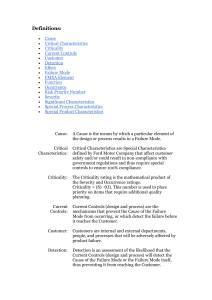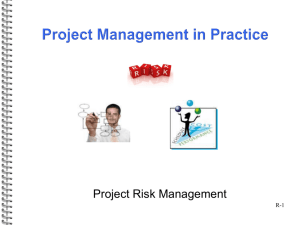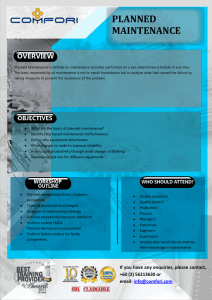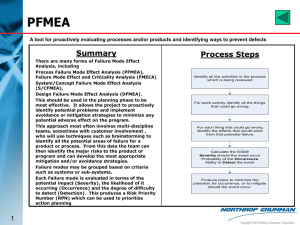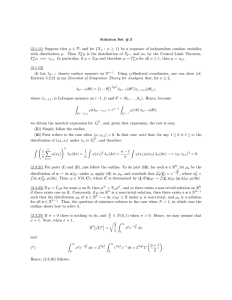The use of classification symbols, special characteristics and RPN
advertisement
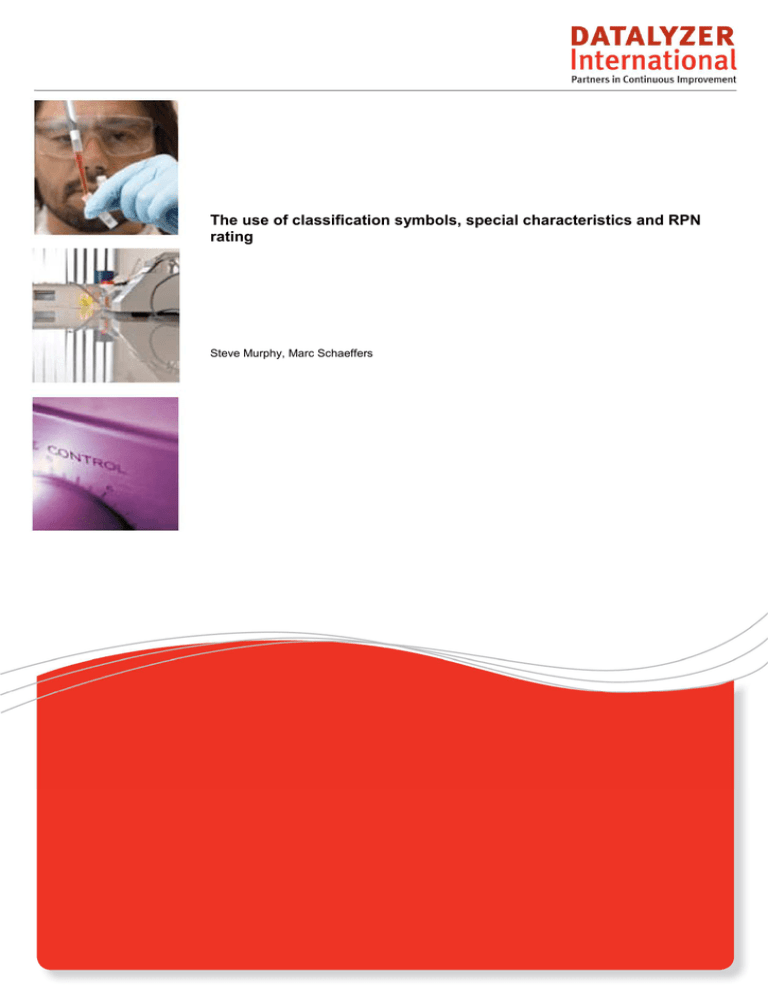
The use of classification symbols, special characteristics and RPN rating Steve Murphy, Marc Schaeffers The use of classification symbols, special characteristics and RPN rating Introduction When I first started working with FMEA the use of RPN (Risk Priority Number) was quite straightforward. We worked on the areas with the largest RPN. Over time customers and legislation have become more demanding and the FMEA process has developed accordingly. Automotive customers in particular are now sensitive to any deviation from their high expectations. Certain important product characteristics have been identified as being “Special”. These are clearly identified on the FMEA and the subsequent control plan. In this paper we will discuss these Special Characteristics with reference to Process FMEA. Prioritising actions from the FMEA When our teams start to think in terms of “What can go wrong “ then we will quickly start to generate Potential Failure Modes and Potential Root Causes. How do we prioritise our actions ? The first thing we should note is any Failure mode that has a Severity of 9 or 10. A Severity this high can be driven by two criterion Safety and Legislation. Considering Safety; if the failure mode can result in injuring the customer or an operator then everything must be done to eliminate the possible causes of that failure even if that means a design change. If the failure mode results in violating government legislation i.e. exhaust emissions too high then everything must be done to eliminate the root causes of this failure mode. When I first started the next criterion is to work on the Characteristic with the highest RPN. Nowadays different approaches are used, for example Ford recommends using the Criticality which is SeverityXOccurrence (SxO) before dealing with the highest RPN. Given the choice then I would use the method that works within your organisation. After we have actioned this work we come to our mid-range RPN’s . Consider this example: S=5 O=2 D=10 RPN=100 Annoying to the customer, rarely occurs but we can’t detect it S=1 0=10 d=10 RPN=100 The customer is indifferent but it happens all the time and we can’t usually detect it. We are sending this material into the field all the time. In both cases SO=10 so the criticality doesn’t help us to prioritise. What do we do? After 9, 10,Criticality and the highest RPN then work on the highest severity first and within that prioritise OccurenceXDetection. Another method put forward by Donald Wheeler is as follows (I have never done this but it seems to have some merit in being a simple way in prioritising Severity then Occurrence, then Detection) The priority is given by associating different weights to Severity, Occurrence and Detection. The weights are 100 for Severity, 10 for Occurrence and 1 for detection 2 Sx100 + Ox10 + Dx1 This would give in the first case above 500+20+10=530 And in the second case above 100+100+2=202 This clearly prioritizes the first case above the second case. Special Characteristics At any one time our FMEA may be telling us that we have characteristics that we must control due to legislation or safety. In automotive there are legislative tests for exhaust emissions and swerving to avoid animals (The “Moose” test). From a product failure perspective customers will no longer accept unreliable gear boxes and valve gear or electrical systems that fail in wet weather. Product characteristics that require special attention to make sure these adverse conditions do not occur are called Special Characteristics. Here is how we use the FMEA to define them. Severity =9 or 10 must be a Special Characteristic and are designated Critical Characteristic (CC) or Also included in this level are processing points that require the operator to take special safety precautions. Maybe they need specific PPE for dispensing acids. This characteristic is marked OS. Significant Characteristics SC are important for customer satisfaction. Typically the Severity will lie in the 4-8 and Occurrence 4-10. These will often be processes that are poorly understood and need special attention. Table 1: Classification based on severity and occurance 3 The classification as shown in table 1 can also be viewed from a financial point of view. The safety zone has high financial consequences if problems occur in the market. The return zone is also a zone where the cost for the company is higher than the cost of solving the problem. Although improvement might be desirable in the other zones the cost of resolving the problem might be higher than doing nothing. If problems can’t be reduced changing the design all efforts need to be made to make sure the detection is very good, ideally D=1. These three designations CC, OS and SC must be noted on the control plan to indicate to the manufacturing staff that particular skills are required or special instructions need to be followed to perform this process. These designations are based on the Ford definitions. As there are no universal definitions companies can use different language within the same spirit, CC could be Critical, SC could be Customer Requirement. Since I started working on FMEA, Ford has also identified another important characteristic: Hi Impact. These characteristics may result in problems further down the production line if the product is out of spec or assembled incorrectly. Conclusion This is a huge subject. In this White Paper we have given an introduction to the criterion for Critical Characteristics and prioritising FMEA actions. If you work in or supply automotive the methodology for prioritising FMEA actions and identifying Critical Characteristics will be defined for you. If you work industries with less established regimes we have described some techniques you can try. The most important thing is agreement among the team and keeping the FMEA process moving forward. 4
